- Home
- ›About Pontiac
- ›Historical Overview
- ›Chautauqua History
Chautauqua History
A National Movement Begins
The crowd of Sunday School teachers as viewed from the outdoor speaker's platform at one of the early New York Chautauqua Assemblies.
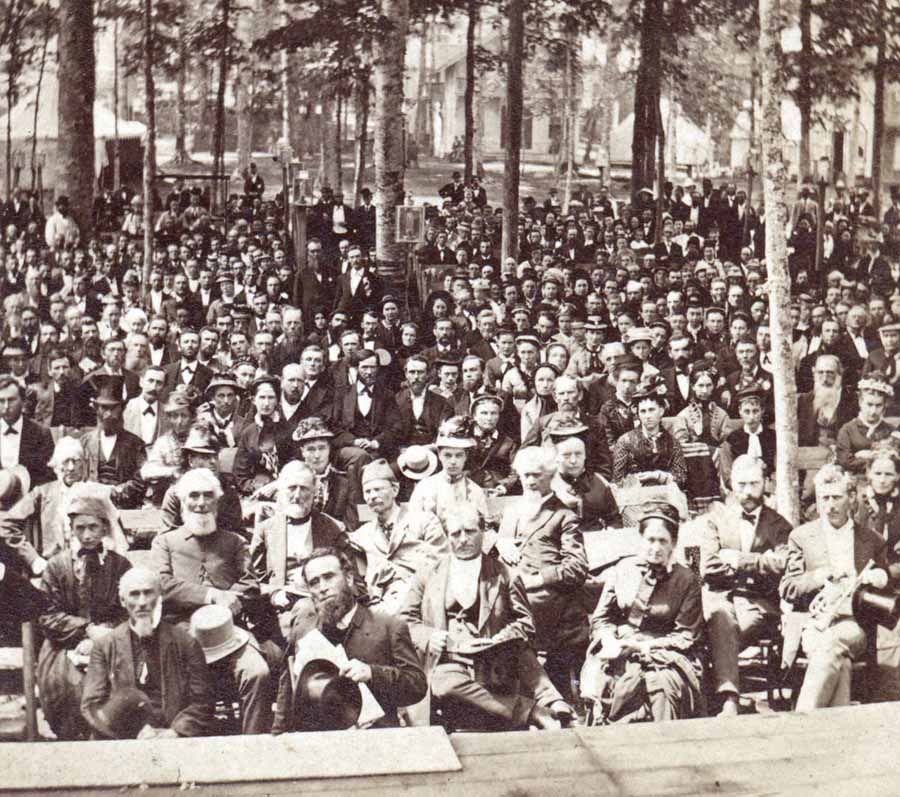
Camping at the NY Chautauqua, 1875

A.C. Folsom - Founder Pontiac Chautauqua

Temperance Leader Carrie Nation at the Pontiac Daily Leader Tent - Pontiac Chautauqua
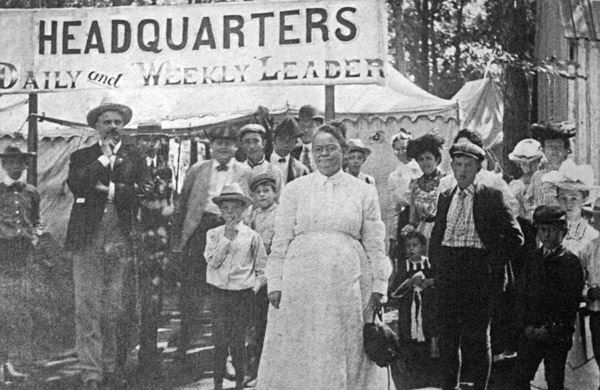
Family tent city inside Riverside Park, Pontiac Chautauqua Assembly
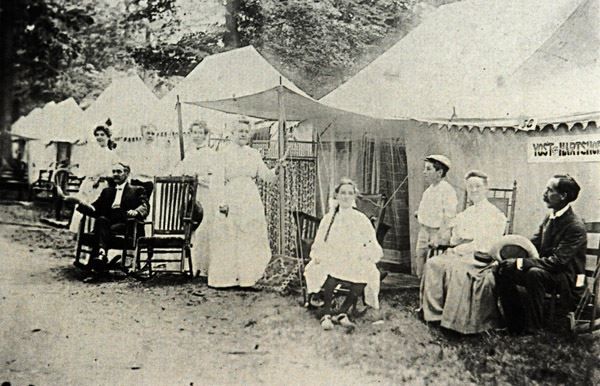
Color Post Card View of Riverside Park and Tent City
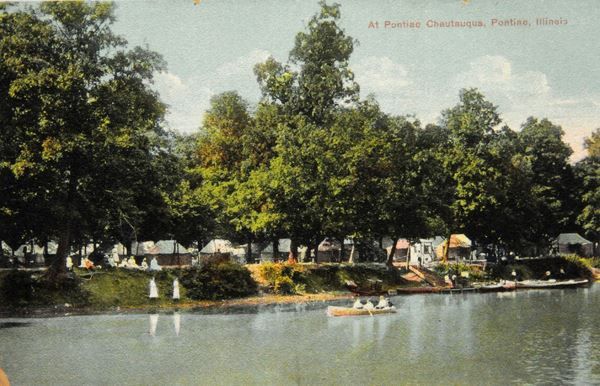
Boys gather in front of Boy's Club tent at Pontiac Chautauqua
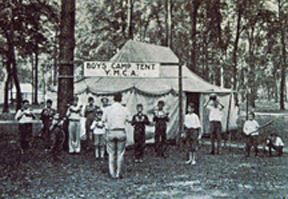
Young boys and girls would attend either a Boys Club or a Girls Club during daylight hours where they were kept busy with sports, crafts, and other activities. Even the youngest children were provided for as the Chautauqua included a kindergarten led by a professional teacher hired from the Normal School near Bloomington, IL. In the evening the entire family would come together for the night's entertainment in the pavilion.
Young Ladies on their way to the auditorium at Pontiac Chautauqua.
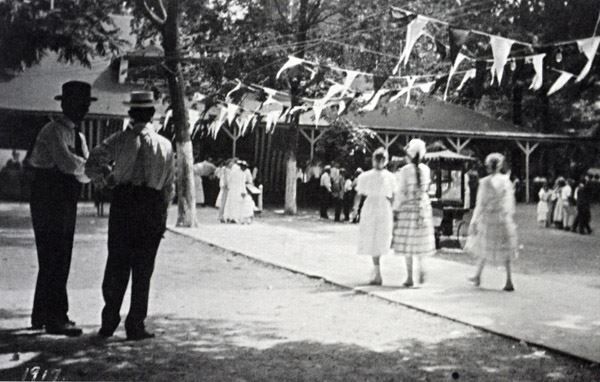
Pontiac's Chautauqua Assemblies were quite successful. In the year 1900, a one day attendance record was set at just over 11,000 people. This is more impressive when one considers that the total population of the city at that time was only 7,048 according to the U.S. Census. In 1905, Pontiac's annual summer assembly set another remarkable attendance record. According to one source, the 1905 Pontiac Chautauqua had the "Largest attendance of any western Chautauqua, its daily attendance during the entire 16 days averaging 6,702," for a two week total of 107,232 attendees. However, interest in the Pontiac Chautauqua Assemblies began to wane in the late 1920s. The economic downturn that presaged the Great Depression had begun by then, and other options were now available for both entertainment and erudition. Radio, a truly national press, and motion pictures became the primary sources of timely knowledge and variety entertainment. The Assemblies had served their purpose admirably, but newer technologies quickly replaced them.
The Chautauqua Legacy
-
115 W. Howard St. | Pontiac, IL 61764 | Phone: 815-844-5847 | Fax: 815-842-3885 | Email
Home | Contact Us | Site Map | Accessibility | Copyright Notices | Government Websites by CivicPlus®

